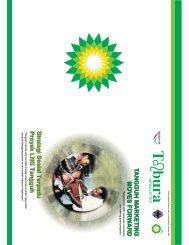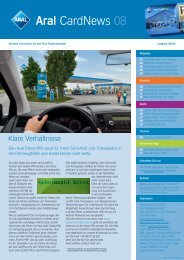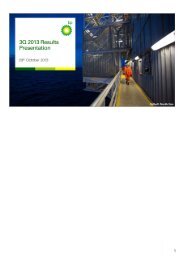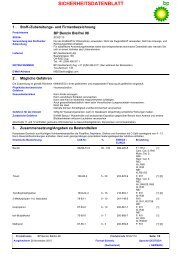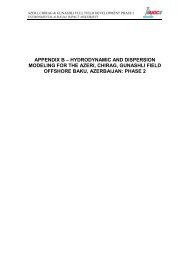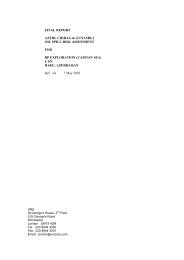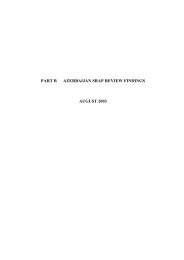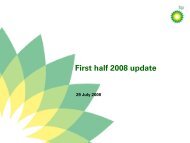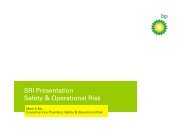Don Field Decommissioning Programme (pdf, 7.8MB) null - BP
Don Field Decommissioning Programme (pdf, 7.8MB) null - BP
Don Field Decommissioning Programme (pdf, 7.8MB) null - BP
Create successful ePaper yourself
Turn your PDF publications into a flip-book with our unique Google optimized e-Paper software.
<strong>Don</strong> <strong>Field</strong> <strong>Decommissioning</strong> <strong>Programme</strong>DON-<strong>BP</strong>-0016.5 Description of Options for the UmbilicalsThe available options for decommissioning the 4in control umbilical and 3in chemicalinjection umbilical (PL600) are described in Paragraphs 6.5.1 to 6.5.5 and similar to thosedescribed for the pipelines options in Paragraph 5.5.6.5.1 ReuseReuse of umbilicals in situ or for another application elsewhere was ruled out as notfeasible because: There is no guarantee of the long-term integrity of the umbilicals No alternative development opportunities have been identified It is not economically viable6.5.2 Leave In Situ with No Remedial WorkThis option involves no work other than Primary Scope Activities, and is based on thepresumption that the current and future status of the umbilicals poses no unacceptablerisk on other users of the sea. The soil in this area consists of a thin veneer of silty sand,overlying clay. The umbilicals are well buried, in terms of length and depth. The statushas remained stable since installation. None of the umbilicals have experiencedsignificant spanning, and there has never been a FishSafe anomaly or snagging hazardsince installation.Whilst this option presents no technical challenges or costs short-term, leaving theumbilicals in situ does raise long-term risk and liability issues with respect to other usersof the seabed, and exposes the Operator to a responsibility for monitoring and carryingout any remedial work on the umbilicals as required.6.5.3 Leave In Situ with Selective RemovalAs described in Paragraph 2.1.4, removal of selected sections involves cut-out andrecovery of areas which emerge out of the seabed by design. The open ends of theremaining sections would be protected from interaction with other sea users.The sections of umbilicals proposed for selective recovery are the NLGP crossings.These areas are ‘above seabed features’ by design, which were identified by thehistorical review, where the existing protection may deteriorate over many years, andwould require particular monitoring and continued remedial work to minimise the threatto other users of the sea.In addition, areas of spans, exposures and inadequate burial could be removed locally ifrequired. However, the historical review indicates there are no areas of exposure orspanning on these umbilicals that might require this type of remedial work.Selective recovery of the NLGP crossings would be performed using the same methodas cut and lift, as described in Paragraph 2.2.3. This would present similar risks in termsof safety and technical challenges, although these would be reduced due to the smallerscope and shorter duration of work.PipelinesMay 2011 10-35




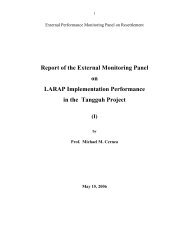
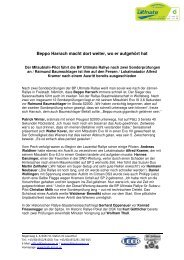
![[PDF] Deepwater Horizon: Accident Investigation Report - BP](https://img.yumpu.com/51697031/1/190x245/pdf-deepwater-horizon-accident-investigation-report-bp.jpg?quality=85)
